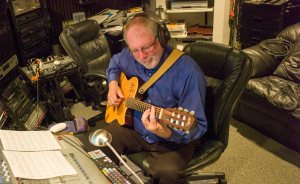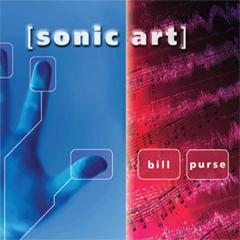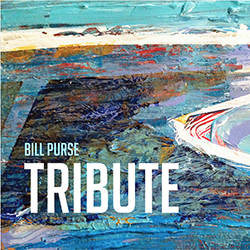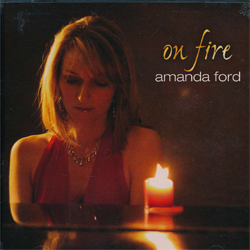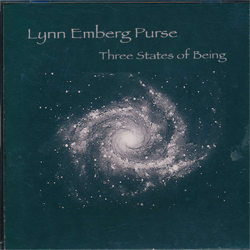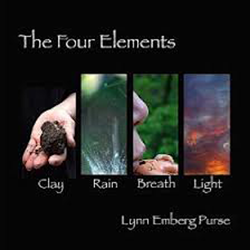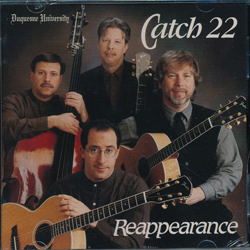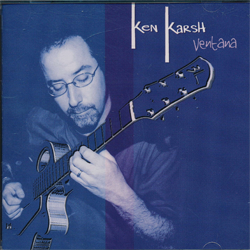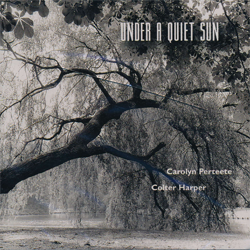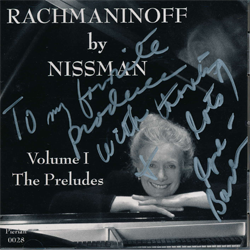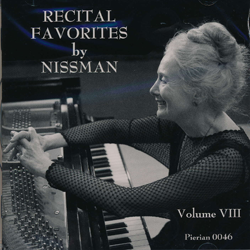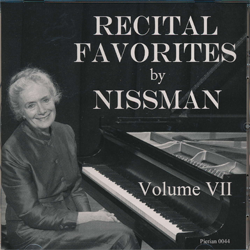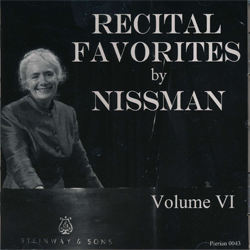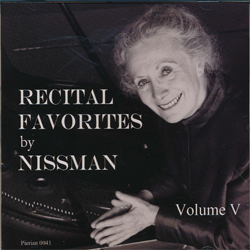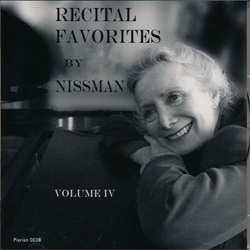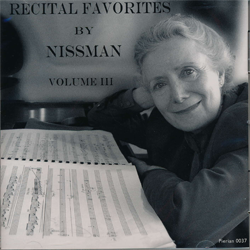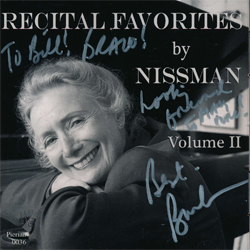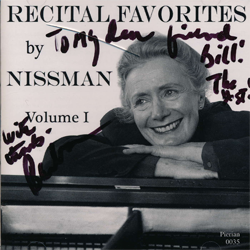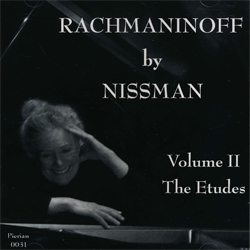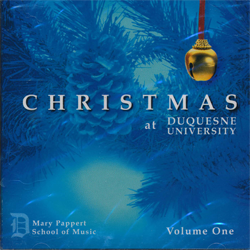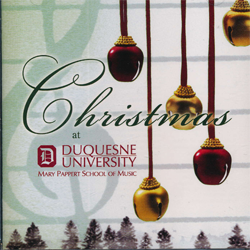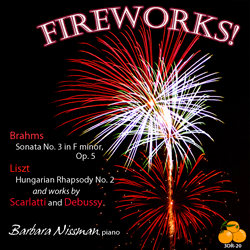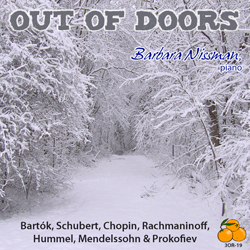Interview with Bill Purse by Dr. Doug Harper, January 12, 2015
DH: How does the album fit into your past 20 years as a composer, musician and a teacher?
Bill: Some of the music on the album, Doug, is twenty years old, or older! These earlier works are songs you write and never tire of playing. I guess it’s what they mean when they say that you channel those special songs as a composer; some full blown while others need a developmental period to reach completion. I’ve studied with some wonderful composition teachers, like Joe Jenkins, who recognize the core essence of your compositional style as intrinsic, but to push the student say, “Well, you write minimalistic works very well, but let’s try something else.” Minimalistic compositions use a great deal of repeated phrases that build in complexity; like Syzygy, a song on Tribute.
Everything I write usually starts out as a solo guitar piece, because the guitar is my comfort zone instrument. If I have to retune it, I’ll will it to expand its range looking for additional interesting ideas, or ways to make my internal songs easier to perform. What I usually do is to write out a solo work for the guitar, then put it into a notation program (Finale), and then convert that into audio (for Pro Tools). The next step is to call Billy [Kuhn] and have him come to my studio to record him playing my drum set; he’s my real live drum machine. He’s always right on the money with impeccable timing, and I can tell him what I’m looking for. Then I’ll start building up from the drums and re-orchestrate the harmonic language suggested by the solo for acoustic or electronic overdubs and orchestration.
When you’re practicing the guitar, especially foundational materials such as: scales arpeggios and improvisation, they may trigger a seed idea for a composition or an idea for a new composition. A lot of times when I write I interpret the composed music for or about a person or a place, such as in Allegheny Sketches. “Sir George’s” title was originally influenced by the Beatles/George Harrison’s composition Blue Jay Way, a street he lived on. Saint George was born on April 23st; that’s my birthday, and my confirmation name was William Edward George Purse; so there are all these parallels for the track named “Sir George”. I wrote the first part, which had a motif I adapted from the ending chord of the composition “Classical Gas.” I flipped some notes and made that the Intro. Then I got stuck for the bridge and remained stuck for a year; a whole year. And then I was sitting on a beach (Virginia Beach, where Lynn and I lived when I wrote it), with a guy, Lester, I don’t even remember his last name. He looked like Yoda. It was one of those dark days, and then the sky opened up and a beam of light hit him in the face… it doesn’t matter what you look like when you see somebody in a beautiful lighting situation! And I went ‘da dee da da, da de da ….’ I had a guitar with me and I started playing to that image, and completed the bridge of Sir George!
There are certain chords that I like that I use a lot. I like 11th chords, for example. If I find a nice chord; why not move it around! There’s a lot of parallel motion in that song or parallel chord streams, like Debussy’s The Sunken Cathedral.
“Reappearance” was also written a considerable time ago. I had a 12 string Washburn guitar and some of the notes never sounded right. They didn’t have any technicians in Virginia Beach like we have in Pittsburgh; I didn’t trust them. So I sent it back to Washburn and they lost it. They lost the guitar for a year and a half. And then one day, on my porch, was a box from Washburn. They found it and fixed it and sent it back to me. So I sat on the beach and I wrote that song. It’s the reappearance of the guitar! (laughter)
I like to work in compound time beyond 4/4. I like how Colter’s composition “New Seasons” starts out on 5; I think that’s great. So “Reappearance” is 1-2-3, 1-2-3, 1-2-3, 1-2-3, 1-2-3, 1-2-3, 1-2-3, 4-5; It’s a combination of two asymmetrical meters 12/8 and 11/8. It sounds simple but it’s really tricky; the little 5 breaks it; it’s similar to Eastern European rhythm. I sent that piece to Robert Fripp. He really liked it and invited me to join the Crafty League of Guitars. But they have this peculiar tuning … so I said, ‘Robert, if this tuning of yours is so far superior to our 600 year traditional E A D G B and E… show me how it’s better for chords melody and improvisation.’ He never answered!
However, I do love altered tuning! I loved Michael Hedges, for example. He was a friend, not a close friend but a friend. We had Michael at Duquesne. He would write pieces of music and alter the tuning to fit the composition, which I thought was interesting. A lot of times I would experiment with different tunings, when I’d get stuck.
DH: These are good stories that relate to specific compositions…
Bill: They do relate to my thinking; my thinking as a composer; always guitar centered.
DH: It is interesting how circumstances sometimes lead to a breakthrough on a stuck project…
Bill: Sometimes you don’t know where it’s going to come from! But you’ve got to be ready when it comes to write it down.
DH: Can you tell us more about how you combined your old compositions with new material, and material recorded with your students?
Bill: In the past I didn’t have enough studio power to really produce what I wanted. With the changes in technology it is now possible to have a professional studio at home. Teaching music technology at Duquesne I see what works for the student from my personal work, and I always keep my studio state of the art. My goal is sonic artistry in recording, which is my mission statement for Ridgewood Studios, Artistry Through Technology. Being able to record any time, and inviting people to come in opens up continually new possibilities.
On my last CD I wrote everything, and that’s a lot to ask of yourself. It really is; to write it; record it, produce it. And this time I said, ‘you know, people have A&R (artist and repertoire) people to find songs for them. On this CD I became my own A&R person; I said there are lovely songs students, teachers and alum have written and I want to record them. In addition some of my older songs that I want to put my stamp on. Why not put them together? So that’s when I contacted Mark Lucas, because I’ve played his piece, “The Woman in the Meadow,” for a long time. He had forgotten all about it! He wrote it for a Dorian assignment in a music composition class we took together with Dr. Joseph Wilcox Jenkins in 1976.
DH: You recorded a couple of songs you heard at your student recitals.
Bill: I think it goes back to my 25 years as the director of Duquesne University’s summer guitar camp; looking for kids who had some kind of spark with the guitar for scholarship consideration; ones who could have an impact on our program. Then I started hearing them; seeing what they are doing! And I attend every recital for guitar and music technology departments, and there are maybe 40 or 50 every semester. And if there is a student composition that really stands out I remember it.
Now Jeremiah [Gregg] is a really wonderful guy. He’s a great player; a great composer; he’d been in a couple of my classes. When his quartet played his composition “David and Goliath” in his recital it knocked my socks off. I said I’m going to get these guys right in the studio, right after the recital. They were so good, and so in-touch. And this session gave them a chance to have someone give their work a professional treatment. They came in right after the recital and I paid them for their studio time, and licensed it from Jeremiah. And that happened again with Ryan Bromley on his song “Syzygy,” and with Colter Harper’s “New Seasons.” When I heard Colter play this song live I really loved it. Every time I’d see him in concert I’d say: “Play that song!” It’s kind of like my Sir George. I wanted to take it in a little different direction on the album; he had an electric approach; I wanted to use the nylon stringed guitar.
Another difference for this CD is that it’s almost all live performance. Maybe we’d do three takes but after the last take you realize you don’t have to go any further.
The CD itself is kind of like a show; you want a good opener and a good closer. My closer is the applause from “Allegheny Sketches”; I thought it was a nice way to finish up! I wanted to get each person who wrote the songs involved in playing them. Mostly that happened.
Some of the work on the CD is ongoing as well. The composition, “Saint Thomas K” is from a series I wrote for Aaron Shearer, the great classical guitarist and teacher, who recently passed away. I had written a tribute piece for him called “Shearer Energy,” and I wanted to complete the series as a triptych with a composition dedicated to his wife Lorraine. She called Tom Kitka, classical guitar professor at Duquesne, “Saint Thomas,” because he’s been extending Aaron’s legacy with the Shearer Foundation, and I think that’s fantastic. I learned a lot from Aaron; he was a giant of classical guitar pedagogy; maybe the most important in the world, and near the end of his life he studied with sports medicine to minimize muscular problems associated with holding and playing the classical guitar. He would often visit us to work with our students and I’m proud that Duquesne gave him an honorary doctorate. She called the Tom lovingly “Saint Thomas,” and I liked that, but I called it “Saint Thomas K” to distinguish it from the famous Sonny Rollins piece, Saint Thomas.
That composition was influenced by the recordings I’ve done with the classical virtuoso pianist Barbara Nissman; especially the 20th century Russian pianist/composers: Rachmaninoff and Prokofiev. I love that style of piano and Bela Bartok also opened my ears up to compositional ideas. I probably know more about piano music than most guitarists, having recorded seventeen albums with Barbra Nissman.
DH: That gives us a great insight into some of the recordings; their background and how they came into being. Do you see this CD as a bridge to a new project?
Bill: Yes, I like doing solo albums a lot. It takes me a long time; as you know I’ve been working on this for a year and a half. But it feels good when it’s done, and I’m getting better. I really like the idea of being my own A&R guy. It was fun; I found the songs I wanted and it made the process shorter.
DH: Certainly one of the things the listener gets from this CD is enormous variety. And I think that’s very important, especially in jazz because sometimes artists are wonderful at playing a certain way, but they put an album together and every piece is a slight variation of the one before.
Bill: I like to go beyond just playing jazz standards that we’ve all heard … but want to add to today’s repertoire in my own way.
DH: Perhaps played in a new way…
Bill: Which can be wonderful!
DH: But this CD presents distinctively different sounds, from synthesizer to Theremin; to nylon string guitar; to hard rock sounds … and not only the sounds but also the compositions are very different, one from the next. Yet it has a feeling of an organic wholeness.
Bill: I think the overarching quality that connects the parts of the album is that they are all pieces of music that I am interested in. I had a student who told me he wrote one composition for the common man, and one for an artistic audience. I said, ‘That’s the wrong principle! You just do the best you can in all aspects of the recording! You don’t just have a dichotomy where it’s easy and accessible! That’s not fair to the music!’ The music needs you to give it as much as you can …
The CD follows my interest. I love electronic; I love Wendy Carlos, the electronic composer who first gained fame with Switched on Bach (1968); I’ve been a student of the history of electronic music for years and years. Working with the Theremin and having such powerful new tools, for example … gives you new possibilities. The piece from Joe Jenkins, my composition teacher, is included because one of my students asked me to play it in his recital! We recorded it in a church; it was beautiful! Stained glass windows; big organ and a Theremin! What a concept! So I had him come in and play it on the organ and I learned something. In fact what you learn on a project like this is amazing. This time I learned that organ players hold notes down between chord changes. Because if they let go of the note it stops, instantly. So they are always holding notes down, and adding the next, then releasing it; it’s a hand-over-hand approach. Now when you do that with a synthesizer; when you play a note it has an attack. Where it jumps to the sound; it moves very quickly. So when he played the synthetic sounds with organ technique; for the synthetic orchestra patches, it didn’t have any attack; it had this beautiful quality that let the Theremin breathe through. So that was interesting and you learn that by looking at the MIDI data in the sequencer. I’ll look at a Stockhausen composition, such as Contact, and the way he notated the electronic score looks like how our sequencers will graphically do it. With the ramps and everything; the way he was drawing it out relates to how we have the attack; the sustain… the notation for the synthesizer; that’s what it looks like on the computer. The music can look like a piano roll! Piano rolls are very important; you can actually see the music on a piano roll. Punches play notes and paper represents silence.
DH: This leads to one of my questions… The CD is a combination of traditional technologies; some old and unusual technologies like the Theremin and some new technologies. So what’s going on your brain as a composer as you combine these technologies, and drawing the best out of some and moving others in new directions?
Bill: I think it’s being familiar with them. A lot of time people will get rid of their old synthesizers after they’ve got a lot of time invested in it. I like to keep all my old gear; they are on racks in the back of my studio. Every now and then you’ll pull them out and listen to them; and what’s old becomes new! Some of the machines have a “color” to them. So it’s really an orchestration process. If you know what it sounds like and you want to add it you can. In “Reappearance” I have a fretless guitar played with an E-bow, which is a little magnet you hold over the strings to make them vibrate as long as you hold it there. When the sound of the E-bow is reversed it sounds like whales.
So if you know the technology and you want to incorporate it you can. You hear it in your head; it’s familiar but it’s a little different. There are many books on orchestration; you can go back to study Rimsky-Korsakov’s book on orchestration, for example, and it’s not always going to work with electronics! They know how the traditional instruments combine … but electronic instruments have two aspects 1) imitative, where they try to imitate acoustic instruments, and 2) abstract. So you are always walking that balance between using these two aspects. When I use electronics I don’t try to imitate acoustic instruments … oh, sometimes I will, but mostly I’m using it for abstract themes; an abstract orchestration. You know, it sounds something like a sting pad, or, for example in Sir George I had a patch that I had Jeremiah play, which was an old Italian electronic string orchestra. It has its own quality; it’s not quite an orchestra. And that’s the challenge, to make that synthesizer sound authentic. A lot of people were shocked when I said, ‘No, that’s not a real piano on Tribute but an M-3 Korg acoustic piano patch!’
DH: You use the Theremin in two compositions on the CD. That takes a big risk, given the traditional associations of the Theremin with film scores of a certain era and style.
Bill: Oh yeah! When the Theremin was introduced RCA marketed it as a means to make music by just waving your hands. They didn’t realize how hard it was to play and marketed it as an instrument anyone could play! Because there’s no pitch center; you really have to have a strong special sense where pitches are in the air; it’s all proximity. Now if someone walks up to you that playing area changes, and it affects the pitch. I worked with orchestras where they tried to put me in the string section but I said, ‘No, I need to be away from people—they’re going to affect the pitch relationship that I’m used to—I need my space around the instrument.’ In those early days there were Theremin concerts, with everybody playing a Theremin. They had one in the Carnegie Music Hall. When one of my pieces, Reappearance, was played by the Electronic Ensemble I was asked to play the Theremin. It was a little different than just playing guitar and bass, so it was Theremin and upright bass on at the concert for the melody. And then I said, ‘Wow, I’m going to use the theremin the same way on the recoding and do a multi-track Theremin solo.’ So I had very dangly, jangly chords, and the Theremin was moving very slowly, like a voice, through it. There were five overdubs of the Theremin; each one had its own part. It was a kind of vocal counterpoint ; each Theremin had a voice. I had a Theremin from Bob Moog, and I would run that through really high quality tube preamp; it sounded very good in the end. I played for five hundred people with the Washington PA Symphony; I did a Dr. Who Concerto with them. They went crazy! I had my cadenza—they applauded in the middle of the piece; everyone, from kids to adults—love that instrument! They wanted to see it; hear about it. I lectured on it … and play it.
DH: Of course it has an association with 1950s science fiction movies; the eerie sound.
Bill: There’s a woman, Clara Rockmore everyone should listen to; she’s a virtuoso. She only played very serious music on the Theremin; Bach, Chopin, Debussy. She was a good friend with Leon Theremin. She had been a child prodigy on the violin, but she developed a nervous condition where she couldn’t touch the strings anymore. So the theremin was perfect and she took it very seriously. They were looking for a Theremin player for the soundtrack of The Day the Earth Stood Still, and Samuel Hoffman had played the Theremin with his big band, and his audiences got a kick out that because it was such a novelty. So they looked for a theremin player in the LA union and consequently his name was the only one so he did all of film scores that used the Theremin in the 1950s. There are Theremins in many films that would surprise you. Gaslight has Theremin in it. Hitchcock’s Spellbound uses the Theremin. So there is a tradition beside the sci fi. People just hear the ‘wooo-wooo’ but it’s not an easy instrument! RCA learned that people just couldn’t play it musically!
DH: The two Theremin pieces on the CD are so completely different. It shows that there is versatility in the instrument that maybe people would not imagine.
Bill: Yes!
DH: OK, to another question. I’m curious as to what specific musicians or compositions inspired your own compositions on the CD?
Bill: I’ve always loved the Pat Metheny group; I like how they write compositionally; it’s amazing. He and Lyle Mayes are like Lennon and McCartney. I also like King Crimson; I like what they did on songs like Discipline and Elephant Talk. That’s what Syzygy reminds me of. It’s funny, Ryan Bromley was studying with me when he wrote that; I made his listen to all these King Crimson recordings. If you listen to those tunes you’ll hear perfect guitar music for looping.
In jazz I am drawn to Pat Martino. And I like a lot of classical composers. As I record more piano pieces I find myself strongly attracted to 20th century composers that I mentioned before; Bartok; Rimsky-Korsakov. A lot of these references are in St. Thomas K. When I was naming the third movement of Allegheny Sketches I remembered that the bass player from Steely Dan, Michael Becker, had referred to a piece’s solo piano intro as ‘Hindemith runs Amok in Harlem!’ I thought, what a great line, but I changed it to Homestead to create the reference to Pittsburgh. But Hindemith writes quartal harmonies, so I based that on a Habanera, but with quartal harmonies moving around. So that was an influence.
I was thinking of a grand spaghetti western theme for the first movement of Allegheny Sketches, “Last Tango in Pittsburgh,” so that was inspired the soundtrack for The Good, the Bad, and the Ugly, composed by Ennio Morricone. It was wonderful to have Sean Jones play on these movements! You were there, Doug! It was really a terrific evening. The orchestra did a challenging piece well. Lynn can write things that sound difficult as hell, but she realizes they have limited rehearsal time. Where I tend to just write things that are tough! They either get them or they fall apart. That one held together.
DH: It was a wonderful night of music with Sean Jones! Of course one of the wonderful things about album are the people you play with. From Sean Jones to some of your students who are already going out into the world. I like how you begin the album with a drum solo by one of your students, Cory Thomas, that invites you into the album.
Bill: How could I not open with that! Those guys were so fired up from their recital! I wasn’t going to play on it … I think it was the third take, and then I added a track later.
And you know I love Jason Hoffman; I was so glad he and Billy played with me. I had Billy come in to add texture to Allegheny Sketches. He’s a wonderful drummer and Jason is an outstanding bassist. And every one of the students did well; what a rhythm section! I had so much fun playing with these students, who are very serious!
DH: You go from playing with these 22 year old students to Don Aliquo, who brings a very interesting interpretation to your established piece, with his flute improvisation. How did you decide to do that, and why?
Bill: Lynn used to play the flute on that piece, when we first performed it. And I missed that sound. So I thought, ‘who can I get to play the flute!’ That song was originally from the 80’s, named The Hawk, and I adapted it and renamed it to signify my respect for Keith Richards’s music and performance. I love Dons soulfulness and chops and he was perfect for the recording.
DH: It sounds like an 80’s song!
Bill: Don came in; he was a little nervous about the flute because he doesn’t play it much. He didn’t want me to pay him for the session because he didn’t think he did well. I said, ‘You don’t understand, Don!’ I had maybe six or eight takes with him soloing over, and he was obsessed because he wanted to do it from the beginning to the end. I said, ‘Don, I’m going to comp the solos!’ So I had eight different solos. You know, it’s kind of like writing, I’d combine the best of what I thought he had done; I’d copy that; paste that; copy, paste. He was amazed when I sent him a copy of the finished thing. Then adding Corey on the drums on top of that was really terrific.
DH: So you’ve got a 22 year old playing virtually with Don, in his late 70s. You’ve got work from Colter, in his mid 30s, an ex-student, who has gone off and done different things. You are really drawing upon the community you have created.
Bill: It’s a Pittsburgh connection; a Duquesne connection. Everything in here has a Duquesne connection, and that’s kind of the bond that holds things together.
DH: I also had kind of an odd question. You are a guitar professor and a guitarist, and you compose for the guitar… and you said that you often begin these compositions with a guitar solo. So I was thinking about the range of guitars and amps that you use. Is there a single guitar and amp combination that you’d take to your ‘desert island?’ One instrument that you’d take?
Bill: That’s an interesting question. First of all there are no amps on the album. Everything is direct but I use two pre-amps; hand-wired Avalon pre-amps. And some of it is actually the result of virtual guitars.
DH: What does that mean?
Bill: There is a pickup on the guitar for each string, and it will allow you to take that vibration of the string and it will virtually make a Stratocaster vibrate like a Les Paul through a Marshall stack … or through a Mesa Boogie … so you’re not locked in anymore. Some of the stuff was done with Amplitube which is a plug-in, so I’ll record the guitar direct. I’m pretty comfortable with this direct recording. But if I had to choose one guitar, it might be the [Gibson] 335; I like it a lot. If I could take the neck off the L-5 and put it on my 335, that would be my desert island guitar. Now I do like the Strat I have with the L-5 neck dimensioned applied to it; I wish I could get something like that for the 335. The neck is just a little thin, but it sounds great. And I’d take the amp that Colter has; the Fender Princeton. And I like that Godin guitar, the older one! I’ve never changed the strings for about five years! Every time I pick it up it sounds good!
DH: One thing I was intrigued with was how you sequenced the tunes to make an overall musical message. Can you talk about that?
Bill: I knew “David and Goliath” was going to be the first cut; that’s just a great opener. Then after that I played around with the sequence; I was going to follow it with “New Seasons” or “Sir George”; eventually I chose “Sir George.” Lynn had suggested that; she said ‘It’s your piece… move that up.’ The energy things are in the front; you get a breather when you here the Arioso. So there is kind of an ebb and flow. I got used to hearing it in that sequence so it came to make sense. But Lynn listened to it and said, ‘You need to move this here or there…’ [Allegheny Sketches was the natural finisher; with Sean playing and the wind symphony; ending with the applause. The rest just fit together.
I master as I go along; I master each song individually. That way I can turn off the mastering if I need to do a remix. I spent weeks and weeks in the car listening to each song. It’s an ideal place to test the sound. If I hear something I don’t like, I’ll write it down and I’ll go fix it. I’ll un-master it; master it again and listen to it. It gets to the point where the problems are fewer and fewer. And they take on a personality; there’s a finished personality of that recording. There’s always three parts to a good recording; you have to have a good recording; a good song and a good performance. That was my goal.
I could do a set just like that CD and it would feel good. The last thing I did was the last thing on the CD; that was the most work, and it made sense. It was a very good way to finish up and having Sean Jones as my special guest was just phenomenal. He just played fantastically.
